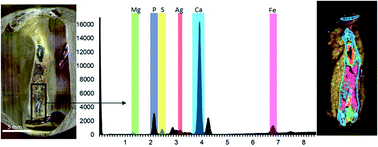Elemental mapping of biodegradable magnesium-based implants in bone and soft tissue by means of μ X-ray fluorescence analysis
Abstract
Besides the biocompatibility and potential support of bone-healing, homogeneous degradation and the uniform distribution of degradation products are key factors for a successful medical application of magnesium (Mg)-based materials as biodegradable implants in orthopedic therapies. In this study, the elemental analysis of implant material, degradation products and mineralization progression was performed utilizing microbeam X-ray fluorescence spectrometry (μXRF). The specimens were derived from an in vivo mice study investigating the performance of Mg-based intramedullary nails in a fracture model. The observation of implant elements Mg and silver (Ag) together with bone-related elements calcium (Ca) and phosphorus (P) elucidated degradation and bone growth at the implant–tissue interface. Persistent parts of the nails were shown up to 133 days after implantation. Additionally the impact of the implanted Mg material on the macro-element balance in major elimination organs and muscles was analyzed by μXRF in comparison to a steel implant. An increase in the potassium level and a decrease in the calcium level were detected. The feasibility of utilizing elemental analysis as a bioimaging tool could be demonstrated.



 Please wait while we load your content...
Please wait while we load your content...